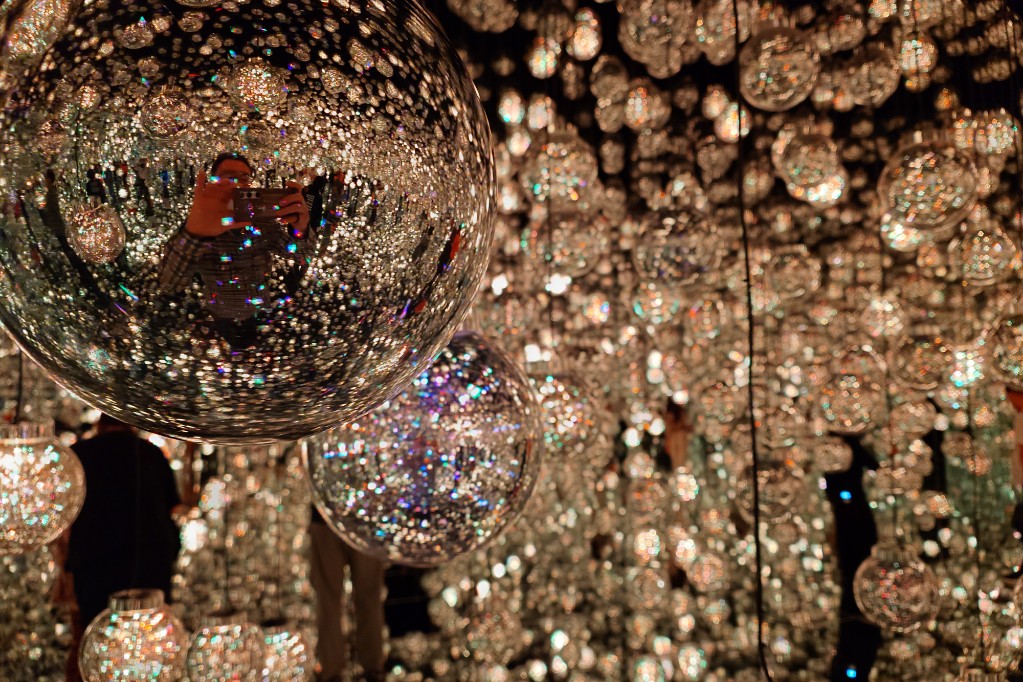カテゴリ: 都内近郊散策

After leaving Mukojima Hyakkaen Garden, I stopped by the nearby Shirahige Shrine.

天暦五年(951年)に近江国の白鬚大明神の御分霊をこの地に祀った。この辺(旧寺島村)の氏神としてばかりでなく、商売繁盛、方災除け、厄除けの神として多くの人々の崇敬を受けている。隅田川七福神の寿老神としても崇められている。
The shrine enshrines the divided spirit of Shirahige Daimyojin from Omi Province, brought here in 951 (Tenryaku 5). It has long been revered not only as the guardian deity of this area—formerly Terajima Village—but also as a god of prosperity in business, protection from misfortune, and warding off evil. It is also worshipped as Jurōjin, one of the Seven Gods of Fortune of the Sumida River.

なお、この界隈は、かつて「寺島ナス」の産地として知られていたところで、近年、 復活プロジェクト もあるらしい。
This area was once famous for producing “Terajima eggplants,” and in recent years there has even been a revival project.
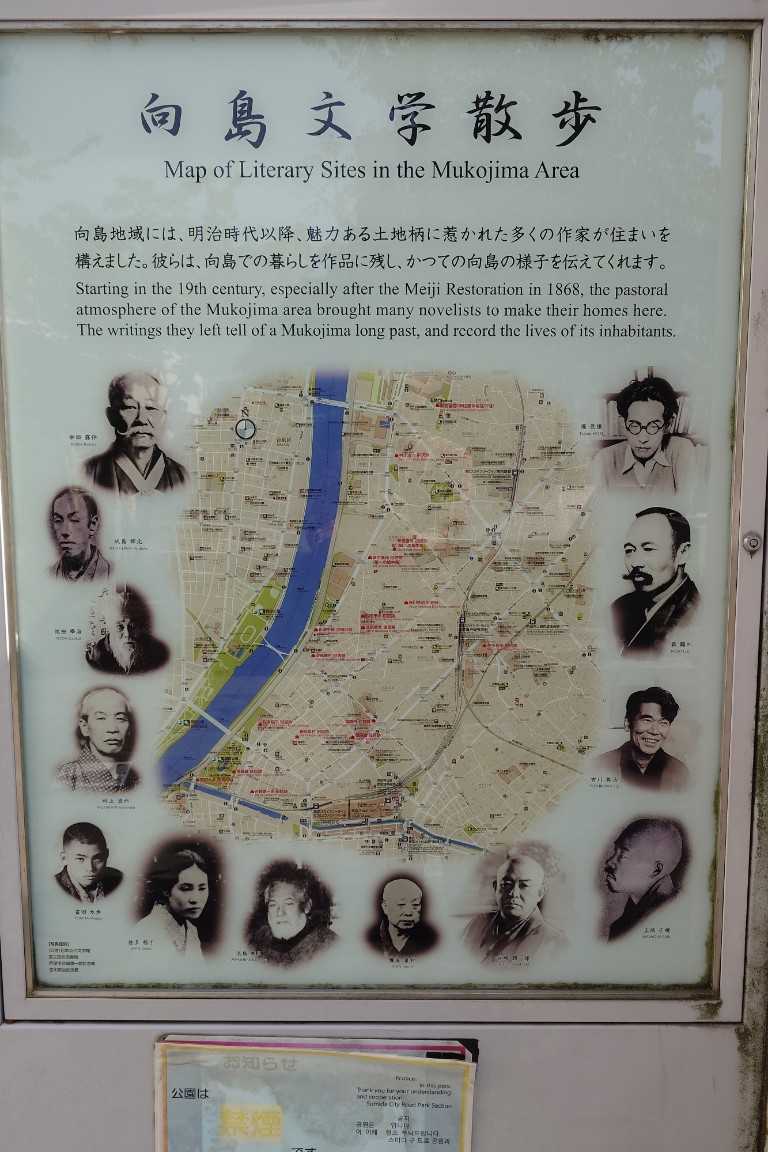
さて、向島は、かつて多くの文豪が過ごしていたことでも知られている。私のような東京西部出身の人間からすると、向島はかなり馴染の薄い土地だが、もとは花街だったこともあり、戦前まではこちらのほうがずっと栄えていたのだ。
Mukojima is also known for having been home to many literary figures. For someone like me, who grew up in western Tokyo, Mukojima feels rather unfamiliar, but it was once a flourishing entertainment district, and before the war it was far livelier than it is today.

I then came to Rohan Children’s Park in Sumida Ward, the site where the home of Kōda Rohan—known for works such as The Five-Storied Pagoda—once stood. A fine monument marks the location.

立派な碑が建てられている。家自体は犬山市にある博物館明治村に移築され、そこで露伴旧居蝸牛庵として公開されている。
The house itself was relocated to the Meiji Mura Museum in Inuyama, where it is preserved as Rohan’s former residence “Kagyūan.”
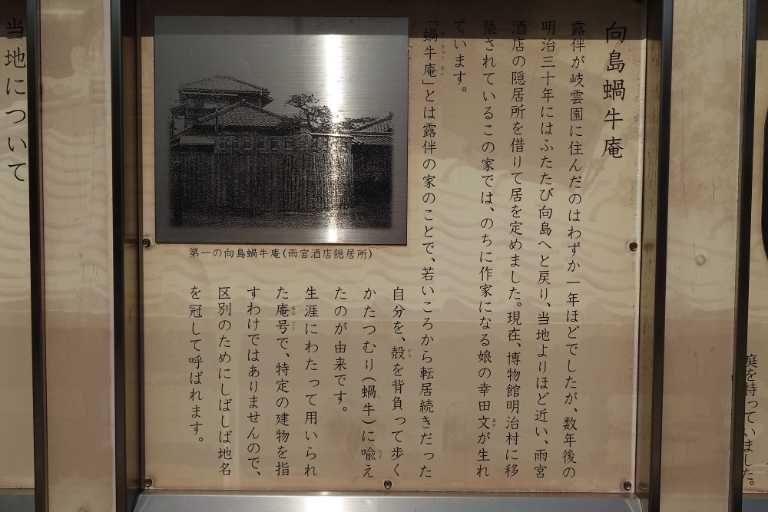
幸田露伴は、明治30年(1897年)からの約10年間をその家で過ごしている。娘で作家になった幸田文は、この家で生まれた。
Rohan lived in this home for about ten years from 1897 (Meiji 30). His daughter, the author Kōda Aya, was born there.

「宮本武蔵」などで知られる吉川英治の旧居後地は、保育園になっている。
The former site of the home of Eiji Yoshikawa—famed for Musashi—is now occupied by a nursery school.
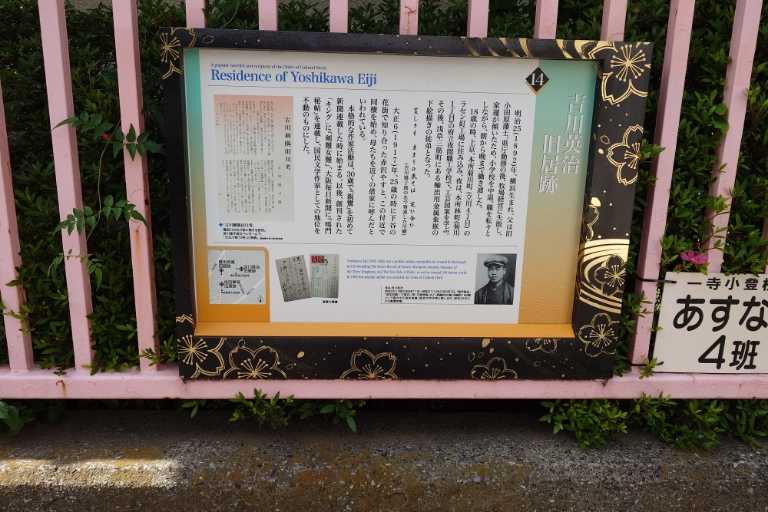
吉川英治はあちこち引っ越しいたようで、青梅や品川にも記念館や旧宅旧居後地があるようだ。ここに住んでいたのは25歳のころのようだ。
Yoshikawa seems to have moved house quite often; memorials and former residences can be found in Ome, Shinagawa, and elsewhere. He lived here when he was around 25 years old.
他にもいろいろ旧居跡のモニュメントがあるらしいのだが、この日は思いのほか日差しが強く、歩き疲れたので断念。東武鉄道で曳舟からふた駅乗って浅草駅に移動した。
There are apparently other monuments marking the sites of writers’ former homes in the area, but the sun was stronger than expected that day, and I was tired from walking, so I gave up on further exploration. I took the Tobu Railway from Hikifune and, two stops later, arrived at Asakusa.
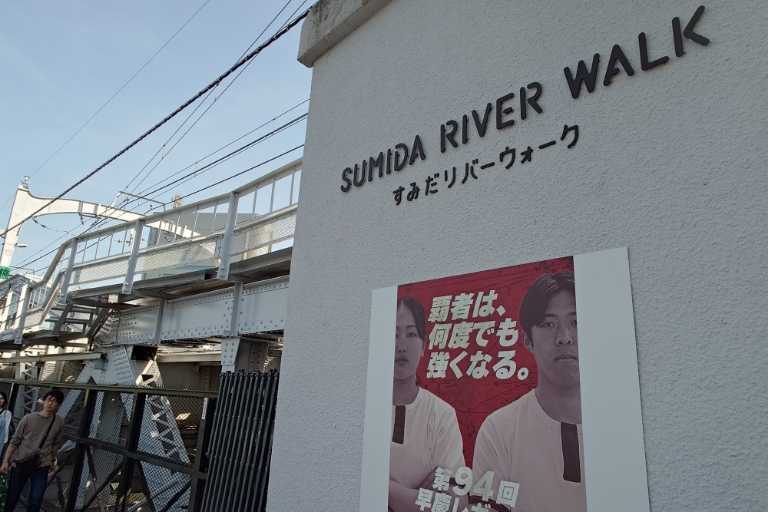
Since I had just wandered around Asakusa recently, I skipped it this time and instead headed for the Tokyo Skytree via the Sumida River Walk.

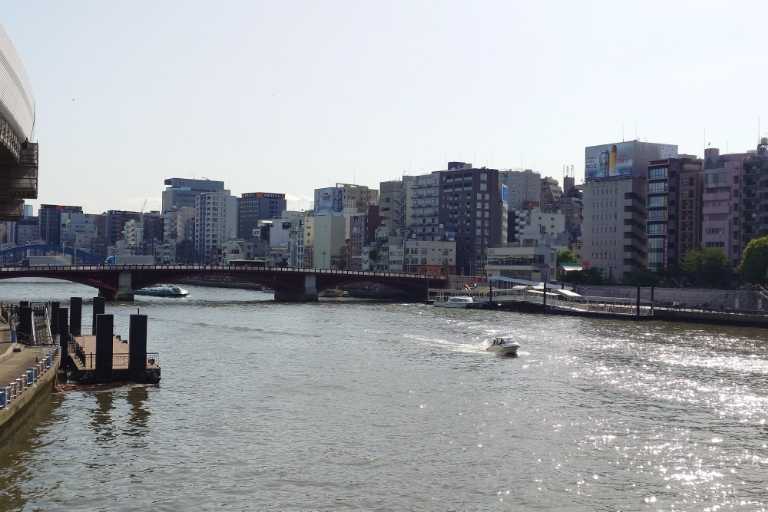

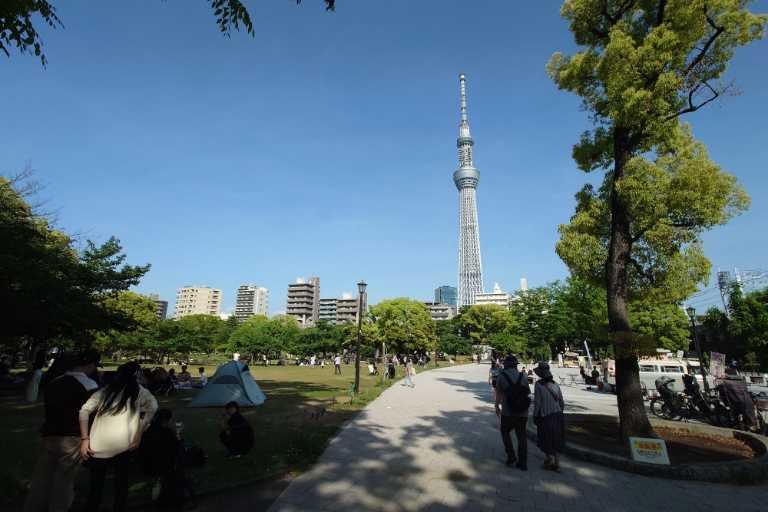
隅田公園。まだ桜の季節に来たことはないが、園内には700本の桜が植えられているとのこと。
Sumida Park, along the way, is said to have 700 cherry trees, though I’ve never visited during blossom season.

ここから、スカイツリーまでのガード下は、「東京ミズマチ」といって、オシャレな店が軒を連ねている…と書きたいところだったが、いきなりシャッターの下りた入居者募集中の店舗を目の当たりにして、肩透かしを食った気分だった。
rom here to the Skytree, the space under the elevated railway is known as “Tokyo Mizumachi,” lined—supposedly—with stylish shops. That’s what I’d like to say, but the first thing I saw was a shuttered, vacant storefront with a “For Lease” sign, which left me feeling a bit deflated.
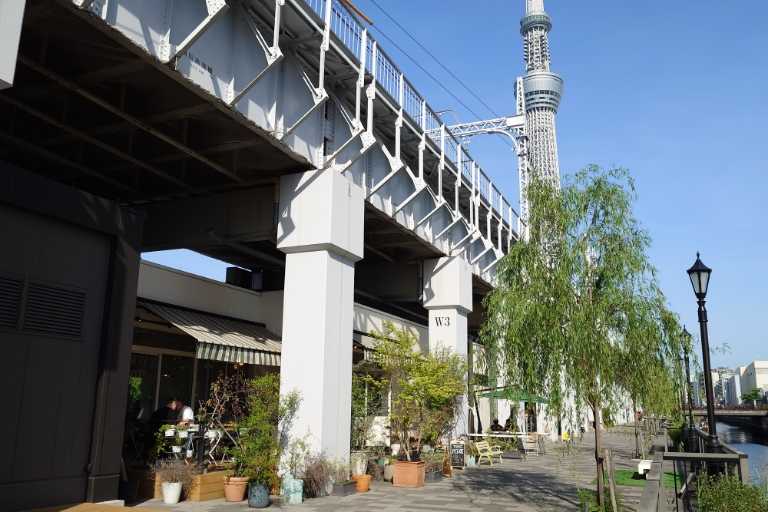
I wonder how Tokyo Mizumachi is really doing. The concept is interesting, and I hope it thrives, but…
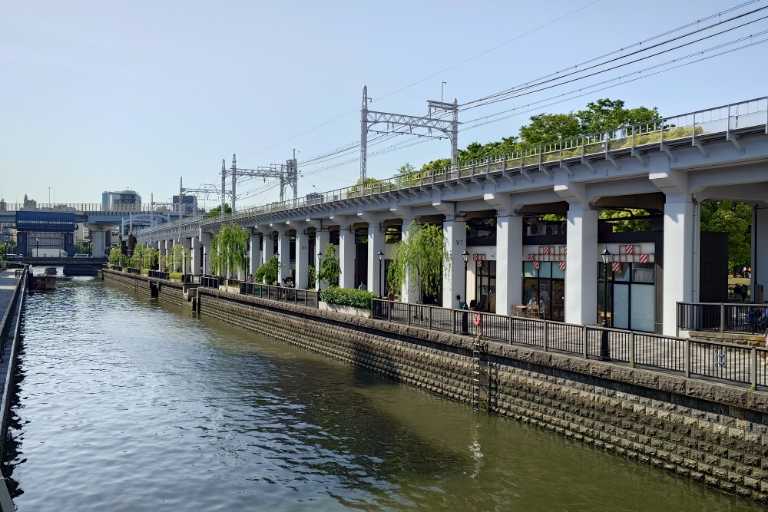
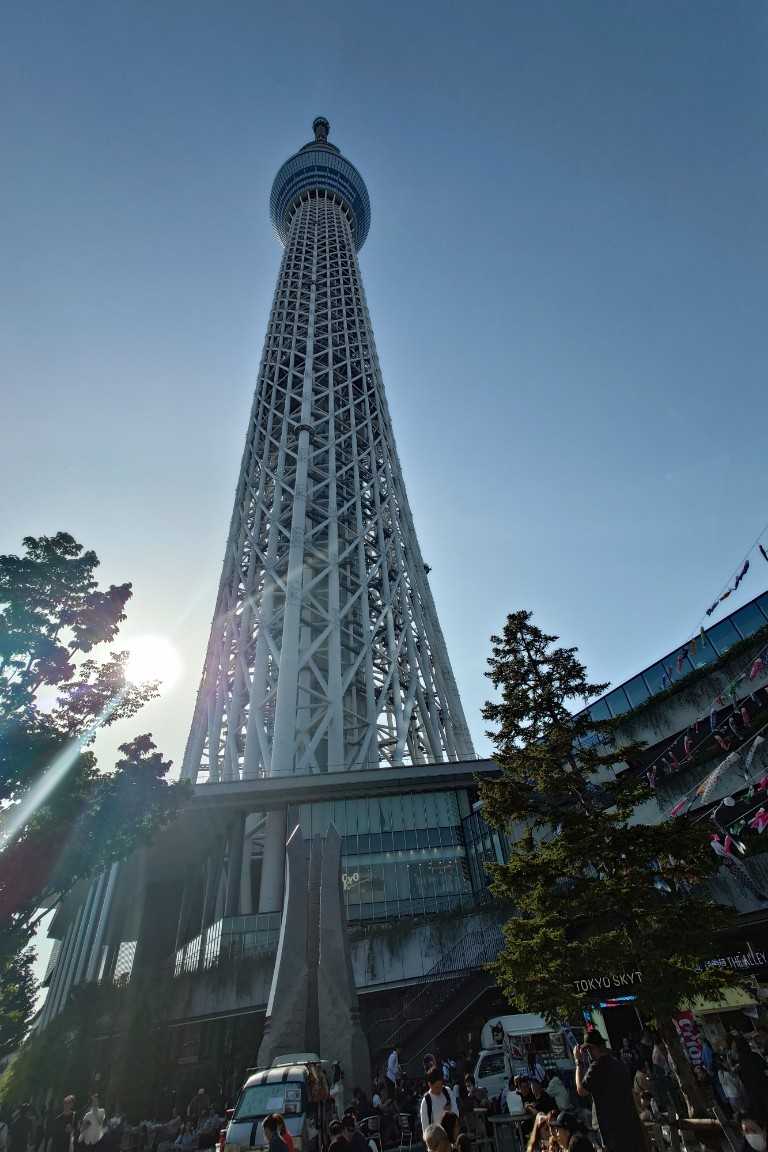
ということでぶらぶら歩いて東京スカイツリー直下の「東京ソラマチ」に到着。
After a leisurely stroll, I reached Tokyo Solamachi directly beneath the Skytree.

こちらはこちらで、壁際の蔦?がなにやら雑然とした印象を与えるのだが、何か意味があるのだろうか??
この日は夕刻用事があったので、スカイツリーには立ち寄らず、そのまま押上駅から帰宅。また日をあらためて来てみたい。
The vines—or perhaps ivy?—clinging to the walls gave a somewhat cluttered impression, though maybe they have some intended purpose.
Since I had plans in the evening, I didn’t go up the Skytree this time. I headed home from Oshiage Station, resolving to come back another day.
お気に入りの記事を「いいね!」で応援しよう
[都内近郊散策] カテゴリの最新記事
-
ぶらり東京散歩38~原宿太田美術館からハ… 2025年11月13日
-
「渋谷を駄目にした 鉄道会社どもーー再開… 2025年11月12日
-
モーリス・ユトリロ展@SOMPO美術館~その2 2025年11月11日
【毎日開催】
15記事にいいね!で1ポイント
10秒滞在
いいね!
--
/
--
PR
X
Comments
shuz1127
@ Re[1]:モーリス・ユトリロ展@SOMPO美術館~その1 Maurice Utrillo Exhibition at the SOMPO Museum — Part 1(11/10)
Henryさん おお、西山美術館に行かれたの…
Henry@ Re:モーリス・ユトリロ展@SOMPO美術館~その1 Maurice Utrillo Exhibition at the SOMPO Museum — Part 1(11/10)
西山美術館、メルカリで無料招待券をお安…
shuz1127
@ Re[1]:ほどよく均整の取れたベリーA~マスカットベリーA2023(白百合醸造) Well-Balanced Berry A – Muscat Bailey A 2023 (Shirayuri Winery)(10/10)
noir-funさんへ 熊本ワインファーム、例…
noir-fun
@ Re:ほどよく均整の取れたベリーA~マスカットベリーA2023(白百合醸造) Well-Balanced Berry A – Muscat Bailey A 2023 (Shirayuri Winery)(10/10)
機会があれば是非、熊本ワインファームの…
shuz@ Re[1]:悪くはないのだけど…エラスリス MAX・カベルネソーヴィニヨン2020 “Not bad, but not quite…” — Errazuriz MAX Cabernet Sauvignon 2020(09/24)
noir-funさん ご無沙汰していますが、お…
Category
カテゴリ未分類
(10)お知らせ・リンク集
(29)ワイン新着情報
(515)ワインコラム
(343)ワインコラム2(話飲徒然草拾遺集)
(75)ワインコラム3(RWGコラム拾遺集)
(28)都内近郊散策
(281)こんな店に行った
(326)B級グルメ・カフェ
(248)健康
(219)エッセイ
(76)ひとりごと・備忘録
(541)カミサン推薦ネタ
(28)語学・資格・学び直し
(95)山歩き・ハイキング
(123)アクアリウム・ガーデニング
(339)育児・教育
(88)PCネット時計カメラ
(129)音楽・オーディオ
(70)リフォーム引越し
(50)こんなワイン買った
(129)ボルドー
(99)ブルゴーニュ・ジュブレシャンベルタン
(90)ブルゴーニュ・モレサンドニ
(40)ブルゴーニュ・シャンボールミュジニー
(45)ブルゴーニュ・ヴォーヌロマネ・ヴジョ
(56)ブルゴーニュ・NSG
(58)ブルゴーニュ・その他コートドニュイ
(63)ブルゴーニュ・コルトン・ポマール・ヴォルネイ
(30)ブルゴーニュ・ボーヌ周辺
(56)ブル・ピュリニー・シャサーニュ・ムルソー
(21)ブルゴーニュ・その他コートドボーヌ
(27)ブルゴーニュ・裾モノイッキ飲み!
(221)ブルゴーニュ・その他地域
(37)ボジョレー再発見プロジェクト
(32)シャンパーニュ
(195)ロワール・アルザス・ローヌ
(54)その他フランス
(16)イタリア
(80)スペイン・ポルトガル
(37)ニュージーランド・オーストラリア
(49)USA
(40)安泡道場(シャンパーニュ以外)
(37)その他地域・甘口など
(43)日本ワイン
(64)ワイン会・有料試飲
(173) セシル・トランブレ…
 New!
mache2007さん
New!
mache2007さん
【wine】アルザスシ… New!
ささだあきらさん
New!
ささだあきらさん
貝殻亭でランチ zzz.santaさん
zzz.santaさん
EF210-328 EF510-3… musigny0209さん
グラムノン yonemuさん
yonemuさん
ジャン・ルイ・シャ… hirozeauxさん
hirozeauxさん
実南 月一会 ミユウミリウさん
ミユウミリウさん
ワイン&ジョギング … Char@diaryさん
道草日記 旅・釣… 道草.さん
鴨がワインしょって… うまいーちさん
 New!
mache2007さん
New!
mache2007さん【wine】アルザスシ…
 New!
ささだあきらさん
New!
ささだあきらさん貝殻亭でランチ
 zzz.santaさん
zzz.santaさんEF210-328 EF510-3… musigny0209さん
グラムノン
 yonemuさん
yonemuさんジャン・ルイ・シャ…
 hirozeauxさん
hirozeauxさん実南 月一会
 ミユウミリウさん
ミユウミリウさんワイン&ジョギング … Char@diaryさん
道草日記 旅・釣… 道草.さん
鴨がワインしょって… うまいーちさん
Keyword Search
▼キーワード検索
Calendar
© Rakuten Group, Inc.


